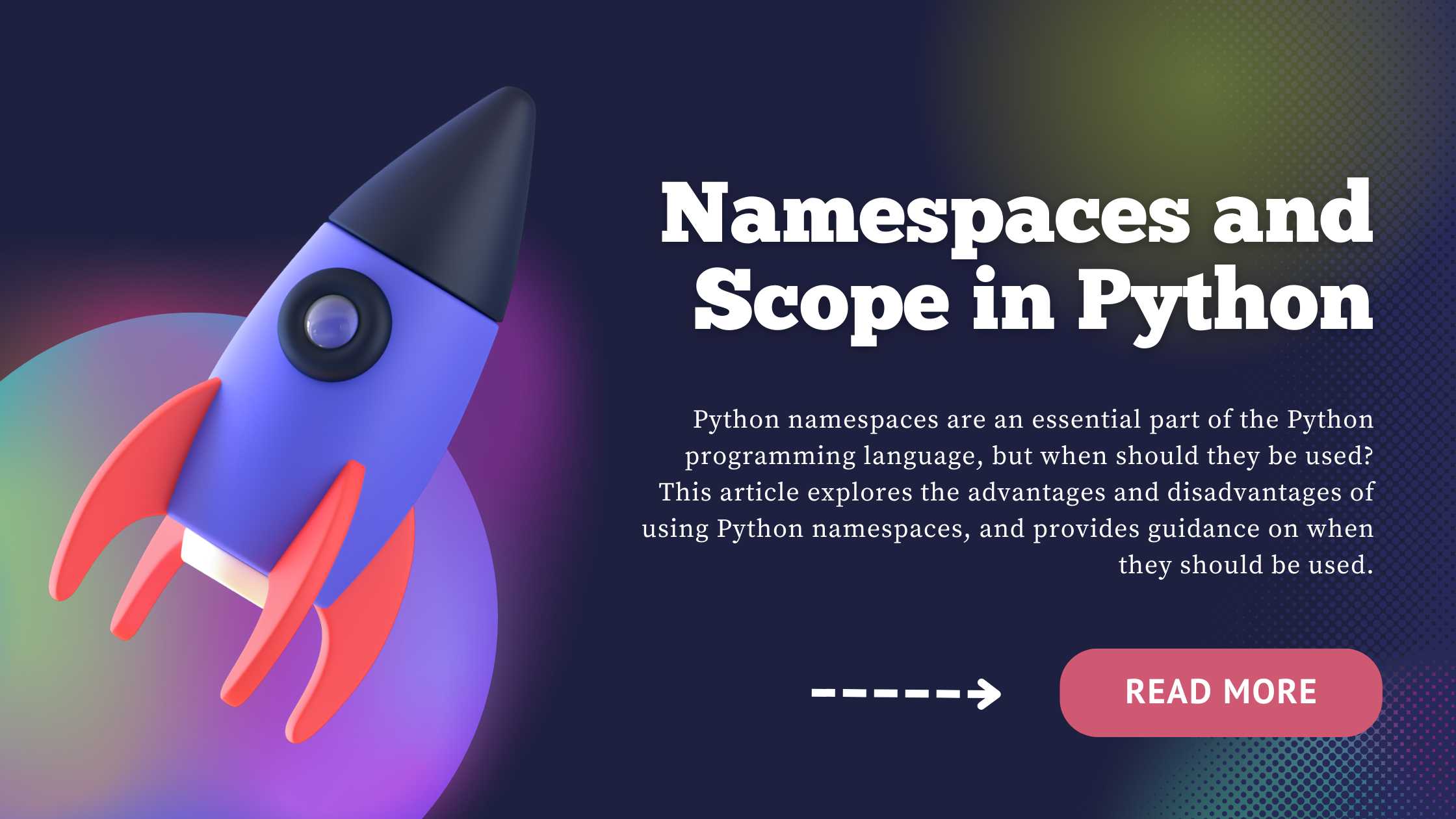Python’s namespaces, namespace types, and namespace scopes will all be covered in this article. namespaces in python focus on the objects they contain. We give things their formal names based on what we call them. To clarify, when I mention “space,” I mean the primary storage area for the object. Namespaces enable several identifiers to refer to the same in-memory data structure. Python provides several options for namespaces, including built-in, global, and local (the default for a single module). Namespaces can be used interchangeably in Python. Namespaces are used to restrict the use of variables. See also:
An Examination of Python Namespaces
What do you mean?
The act of giving something a name is the first step in setting it apart from similar things. In Python, identifiers and labels are interchangeable. A name serves no other purpose than to identify a person or thing. Information (context and value) connected with each name is stored in the main memory. Space. Python objects and their associated data are always stored within the namespace. Python’s official documentation has information on this namespace. In Python, a “key” is simply a name, while a “value” is the actual value itself.
Instances Serve as Representations for Namespaces
The organization of the file system is a perfect illustration of namespaces. Information can be cut and pasted. In-file identifiers simplify document retrieval. The phonebook serves as a fantastic example of namespaces in python in action. You should try to locate John’s contact details any way you can. In-file identifiers simplify document retrieval. In Python, a name stands in for an individual, and the proximity of other names shows the available area for that individual to move around in.
There are three broad types of Python namespaces.
System-Integrated
The input(), print(), and type functions in Python’s standard library are all static and cannot be modified. These namespaces are built into Python itself.
About the Global Naming
The module namespaces are accessible to the global namespace after initialization.
Language Coding System
With each new function, “local namespaces” are generated. A local application can still interact with the system and global namespaces even when running in its namespace.
Make up a brand-new URL from scratch.
The print() function is available in both the global and local namespaces. Namespace x was an international effort, and namespace y was a regional one that we established.
Possible Python Applications
The longer you can expect to use something, the longer it will last. Python variables have a fixed lifetime, after which they become inaccessible for further use. In Python, “scopes” are objects that have direct access to a specific namespace.
Diverse Perspectives
Always be aware of what’s going on in your immediate vicinity.
In Python, a variable with function scope can only be accessed inside of that function.
International Viewpoints
Any variable declared within a Python module has a global scope throughout the Python program.
Comprehensive Zoom
To avoid having to create our modules or user-defined functions (UDFs), we can use the language’s standard methods instead, such as print(), type(), and input(). Input or retrieved scoped scripts.
Exteroceptive Data Internalization
Private variables are only accessible within the current function or any inner functions.
Define
The act of giving something a name is the first step in setting it apart from similar things. In Python, identifiers and labels are interchangeable. A name serves no other purpose than to identify a person or thing. The primary memory stores both names and their associated values. Space. namespaces in python to store information about objects and their names. Python’s official documentation has information on this namespace. In Python, a “key” is simply a name, while a “value” is the actual value itself.
Summary
This article focuses on namespaces in python and scopes. The goal of this piece is to introduce Python namespaces and types to the reader. All of them have names.
For this definition, the item’s primary “space” is here. Python’s namespaces can be either built-in (shared by all programs) or global (private to a single application).
Keep in mind that there is

